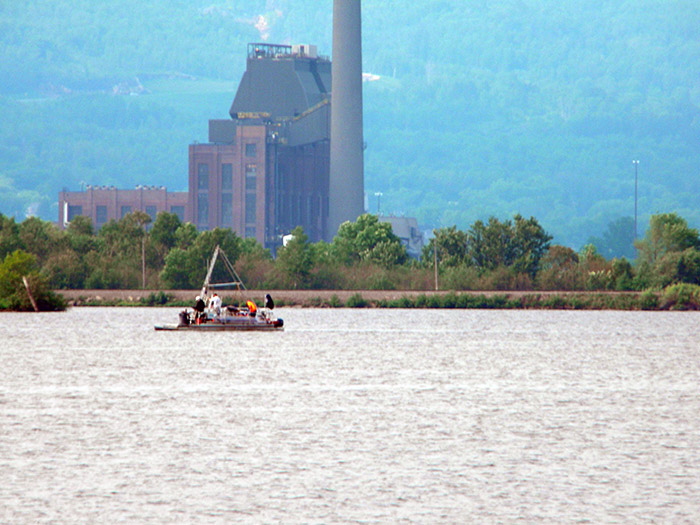St. Louis River Estuary/Watershed Toxics Total Maximum Daily Load

GLEC participated in the development of a TMDL for toxic chemicals (mercury, PCBs, DDT, PAHs, dieldrin, toxaphene and TCDD) in the St. Louis River Estuary Area of Concern (AOC) for EPA Region 5. Contaminated sediments, abandoned hazardous waste sites, landfills, atmospheric deposition, industrial discharge and surface runoff have all been identified as causes of impaired beneficial uses in the river. TMDL development includes determining the sources of toxic chemical pollutants, calculating baseline loadings and loading allocations to ensure that designated uses are met, and developing an implementation plan to achieve these allocations. This TMDL is complicated because the toxic chemicals, although generally being persistent and bioaccumulative, differ significantly in terms of sources, loading histories, and spatial distributions throughout the St. Louis River watershed and within the harbor estuary. Due to this complexity, the TMDL team pursued a modeling approach combining watershed modeling; hydrodynamic and sediment transport; toxic chemical transport and fate; and food chain bioaccumulation. A particular focus was modeling the watershed sources and transport of mercury and sulfate.
The modeling approach used existing data to make progress identifying the relative magnitude of loads contributing to the St. Louis River’s beneficial use impairments (BUIs). With the inclusion of a foodweb bioaccumulation model, some BUIs were directly addressed. Thus, an intended outcome of the TMDL process was a load-reduction strategy predicted to remove BUIs and meeting AOC and TMDL objectives.
A phased approach was implemented that includes developing integrated models of the St. Louis River system to identify data gaps, assess existing conditions, better understand the system, and develop TMDL components. A targeted data collection effort to fill in the data gaps was developed to pursue subsequent to (and in some cases, concurrent with) modeling.
GLEC has provided expert guidance in selecting the modeling approach, identifying data gaps for toxic chemicals of interest, identifying and integrating ongoing monitoring and research efforts in the St. Louis River watershed and within the harbor estuary, and development of a field sampling plan and QAPP.
While the EPA has approved toxic chemical TMDLs that used a variety of simple and complex development approaches, the project team determined that a simple approach could not meet all requirements for the TMDLs required in the St. Louis River AOC. TMDL development within this AOC requires a complex approach due to numerous and varied sources of pollutants, complex hydraulics and a large pool of engaged stakeholders, each with different objectives. Sources in the AOC include legacy sediment sources, urban stormwater runoff, rural/suburban runoff, atmospheric deposition, and mine drainage. Complex hydraulics within the harbor/estuary are created from lake seiche, current reversals, and harbor geometry. Stakeholders in the AOC include municipalities and industries with significant infrastructure that would be expensive to retrofit; thus, they are interested in a high level of accuracy in the TMDL to ensure that the potential investments required are truly necessary. Other stakeholders include the Fond du Lac tribe, responsible parties for two Superfund sites, and local conservation organizations.

